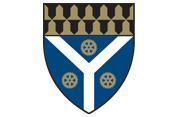A Tool to Guide a Tricky Procedure

One procedure that is commonly part of hip revision surgery, known as an extended trochanteric osteotomy (ETO), involves opening the bone to expose the hip stem to allow the surgeon to chisel out the hip stem from the inside. It involves multiple cuts, and without landmarks, these cuts can be tricky for surgeons.
A student team - Angel Mora ’21, Reza Bergemann ’21, and Wesley Day ’21 - worked with Dr. Michael Leslie, chief of orthopaedic trauma for the Yale School of Medicine and Yale New Haven Hospital on designing a device to help guide surgeons through the procedure. The project was part of Medical Device Design and Innovation (MENG/BENG 404), co-taught by Dr. Daniel Wiznia, assistant professor of orthopedics and rehabilitation and mechanical engineering and materials science, and Steve Tommasini, research scientist at the School of Medicine. The course is designed so that each student team works with a real-world client to develop or improve a particular medical technology.
An ETO requires a longitudinal cut down to the end of the hip stem. Sometimes, the cut is made improperly, making it challenging to chisel out the hip stem. The surgeon also may drill a straight line of holes along the anterolateral femur, and a final cut involves slowly lifting the bone up to make a controlled fracture of the femur. Without supplemental guidance, the procedure could lead to an uncontrolled fracture of the femur, and errors in estimation can mean a much longer operation time and significant morbidity.
The student team set out to design a device that would streamline the ETO procedure to make it reproducible and reduce its risks. They designed a device to ensure that cuts are made at the proper position and angle, and drill holes are arranged in a straight line to reduce the chances of secondary fractures.
The project was one of several taken on by students this semester in the course. Others included a pressure-measuring device for breastbone surgery, an app for patients recovering from back surgery, a drilling guide for patella surgery, and a better way to measure the blood pressure of patients with obesity. Mentors to the teams included several faculty members from the Yale School of Medicine, as well as external partners, such as Microvention, a company that develops minimally-invasive devices for treatment of blood vessels in the brain.

